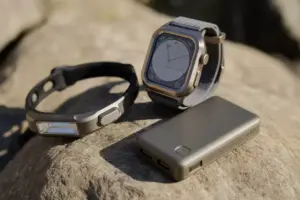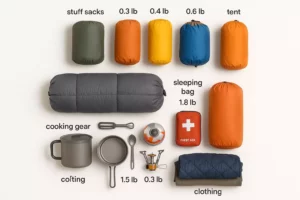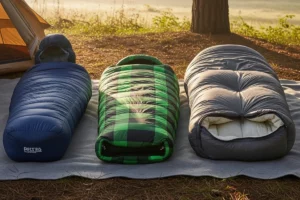The Ultimate Camping Axe Guide: Find Your Perfect Match
Picture this: you’re deep in the wilderness, surrounded by towering trees and the crisp scent of pine. The sun is setting, and you need to gather firewood for the night. You reach for your camping axe, and with a few precise swings, you have enough kindling to keep your campfire burning bright. The right camping axe isn’t just a tool—it’s your gateway to outdoor self-reliance and adventure.
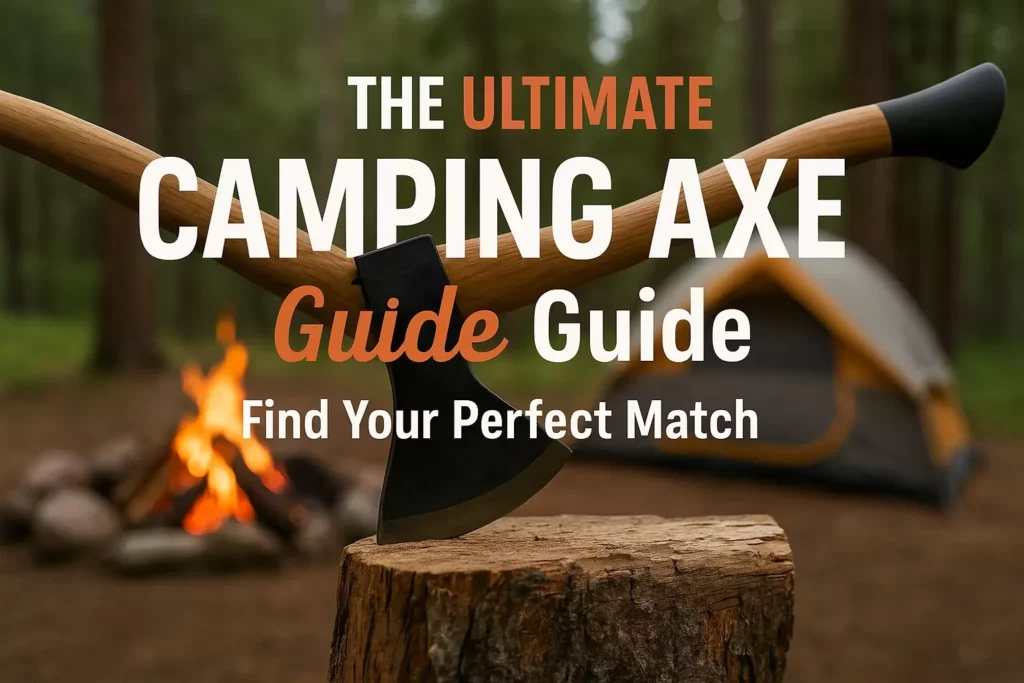
Whether you’re splitting logs for a cozy campfire, clearing brush for your tent site, or preparing kindling for campfire cooking, choosing the best camping axe can make or break your outdoor experience. With countless options flooding the market, finding the perfect match for your camping style requires understanding the key features, types, and intended uses of these essential outdoor tools.
Key Takeaways
- Size matters: Choose between hatchets (12-16 inches) for portability, camp axes (16-24 inches) for versatility, or full-size axes (24+ inches) for heavy-duty tasks
- Steel quality determines performance: High-carbon steel holds the sharpest edge, while stainless steel resists rust but requires more frequent sharpening
- Handle material affects durability: Hickory wood offers traditional feel and shock absorption, while fiberglass provides lightweight durability
- Weight balance impacts efficiency: A well-balanced axe reduces fatigue and increases chopping power
- Safety features are non-negotiable: Look for secure head attachment, comfortable grips, and always include a protective sheath
Understanding Camping Axe Fundamentals
What Makes a Great Camping Axe?
The best camping axe combines portability, durability, and efficiency in one well-designed package. Unlike full-size felling axes used by professional lumberjacks, camping axes prioritize lightweight construction without sacrificing cutting power.
A quality camping axe should feature:
- Sharp, durable blade that holds its edge through extended use
- Comfortable handle that provides secure grip even when wet
- Balanced weight distribution for efficient chopping motion
- Compact size for easy transport in your camping gear
- Rust-resistant materials to withstand outdoor conditions
Key Components Explained
The Head: The business end of your axe, typically weighing between 1-3 pounds for camping models. The head’s geometry affects performance—a wider blade excels at splitting, while a narrower profile works better for precision cuts.
The Handle: Your connection point to the tool, ranging from 12-28 inches for camping axes. Handle length directly impacts leverage and portability—longer handles generate more power but take up more pack space.
The Eye: The socket where the handle connects to the head. A secure eye connection prevents dangerous head separation during use.
Types of Camping Axes: What Is the Best Camping Axe for You?
Hatchets: The Backpacker’s Choice 🎒
Length: 12-16 inches
Weight: 1-2 pounds
Best for: Ultralight camping, backpacking, kindling preparation
Hatchets represent the most portable option for camping axes. Their compact size makes them ideal for hikers who need to minimize pack weight while maintaining essential wood-processing capability.
Pros:
- Lightweight and packable
- Easy to handle with one hand
- Perfect for small tasks
- Fits easily in most camping packs
Cons:
- Limited chopping power
- Not suitable for large logs
- Requires more swings for bigger jobs
Camp Axes: The Versatile Middle Ground ⚖️
Length: 16-24 inches
Weight: 2-3 pounds
Best for: Car camping, base camp setups, general firewood processing
Camp axes strike the perfect balance between portability and power. They’re the most popular choice among recreational campers who want one tool that handles multiple tasks efficiently.
Pros:
- Excellent versatility
- Good leverage for chopping
- Manageable weight
- Suitable for most camping tasks
Cons:
- Heavier than hatchets
- May be overkill for minimalist camping
- Requires two-handed operation
Full-Size Axes: Maximum Power 💪
Length: 24+ inches
Weight: 3+ pounds
Best for: Extended camping, cabin use, heavy-duty wood processing
Full-size camping axes provide maximum chopping power for serious outdoor enthusiasts who need to process large amounts of firewood or handle demanding cutting tasks.
Pros:
- Superior chopping power
- Efficient for large logs
- Excellent leverage
- Professional-grade performance
Cons:
- Heavy and bulky
- Not suitable for backpacking
- Requires significant storage space
- More expensive
Essential Features to Consider
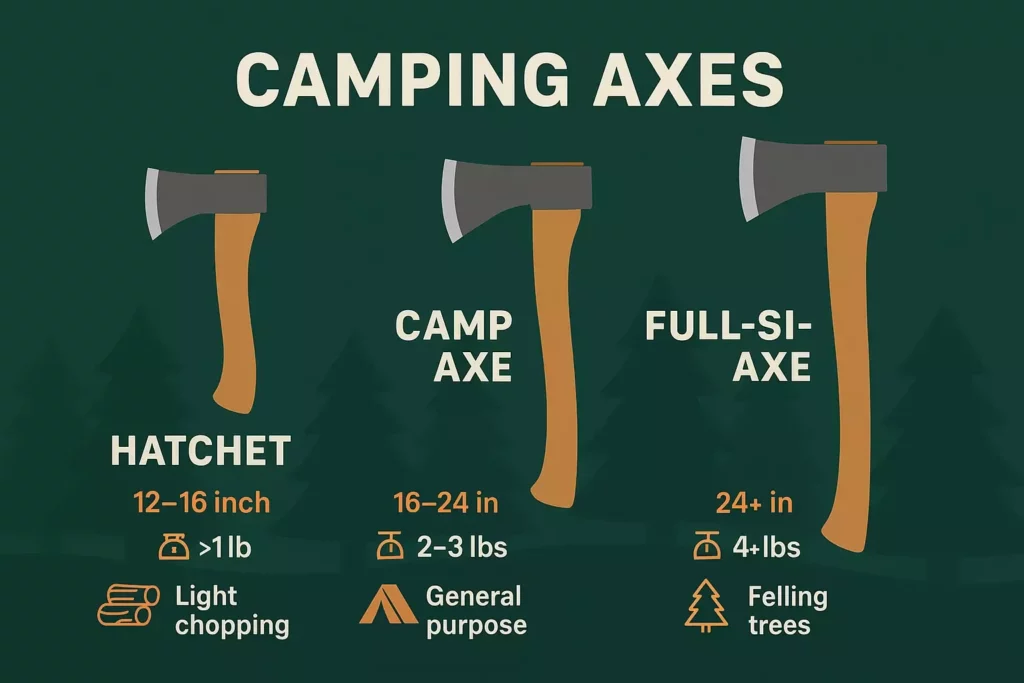
Blade Material and Construction
High-Carbon Steel 🔥
- Holds extremely sharp edges
- Easy to sharpen in the field
- Prone to rust without proper care
- Preferred by experienced users
Stainless Steel ✨
- Excellent rust resistance
- Low maintenance requirements
- Harder to sharpen
- Good for casual users
Tool Steel ⚡
- Balanced performance
- Good edge retention
- Moderate rust resistance
- Popular in mid-range axes
Handle Materials
Hickory Wood 🌳
- Traditional choice with excellent shock absorption
- Comfortable grip and natural feel
- Can break under extreme stress
- Requires occasional maintenance
Fiberglass 🔧
- Lightweight and virtually unbreakable
- Consistent performance in all weather
- Less comfortable than wood
- Modern synthetic option
Steel ⚔️
- Maximum durability
- Heavy weight
- Can transmit shock to hands
- Often features rubber grips
Weight and Balance
The relationship between an axe’s weight and balance determines its effectiveness and user comfort. A well-balanced axe feels lighter than its actual weight and delivers more chopping power with less effort.
Head-Heavy Balance: Provides maximum chopping power but can cause fatigue during extended use.
Neutral Balance: Offers the best compromise between power and control for most users.
Handle-Heavy Balance: Provides excellent control but reduces chopping efficiency.
Top Camping Axe Categories
Best Budget Options Under $50
Budget camping axes prove that you don’t need to spend a fortune for reliable performance. These axes typically feature basic steel heads with wooden or composite handles, providing solid functionality for occasional use.
What to Expect:
- Decent edge retention
- Standard handle materials
- Basic finish quality
- Limited warranty coverage
Mid-Range Performers ($50-$150)
Mid-range camping axes offer the sweet spot of performance and value. They typically feature better steel, improved handle construction, and enhanced durability compared to budget options.
Enhanced Features:
- Premium steel alloys
- Ergonomic handle designs
- Better quality control
- Extended warranties
Premium Professional Grade ($150+)
Professional-grade camping axes represent the pinnacle of design and craftsmanship. These tools feature the finest materials, precision manufacturing, and often include lifetime warranties.
Premium Benefits:
- Exceptional steel quality
- Hand-forged construction
- Lifetime warranties
- Superior balance and finish
Safety Considerations and Best Practices
Pre-Use Inspection Checklist ✅
Before each camping trip, inspect your axe thoroughly:
- Head Security: Ensure the head is firmly attached to the handle
- Handle Condition: Check for cracks, splinters, or damage
- Blade Sharpness: Verify the edge is properly maintained
- Protective Sheath: Confirm the sheath is intact and secure
Safe Chopping Techniques
Proper Stance: Stand with feet shoulder-width apart, perpendicular to the target log. Maintain a stable base throughout the swing.
Target Selection: Choose appropriate targets—avoid logs with knots, metal, or embedded debris that could damage the blade or cause dangerous deflections.
Swing Mechanics: Use controlled, deliberate swings rather than wild, powerful chops. Let the axe’s weight do the work.
Clear Work Area: Ensure at least 6 feet of clearance in all directions before swinging.
Storage and Transport
Always use a protective sheath when transporting your camping axe. Store the axe in a dry location and apply a light coat of oil to prevent rust. When packing for camping trips, secure the axe to prevent movement that could damage other gear or cause injury.
Safety should be your top priority, especially when camping with kids or in group settings. Consider including axe safety in your family camping activities to teach responsible tool use.
Maintenance and Care Tips
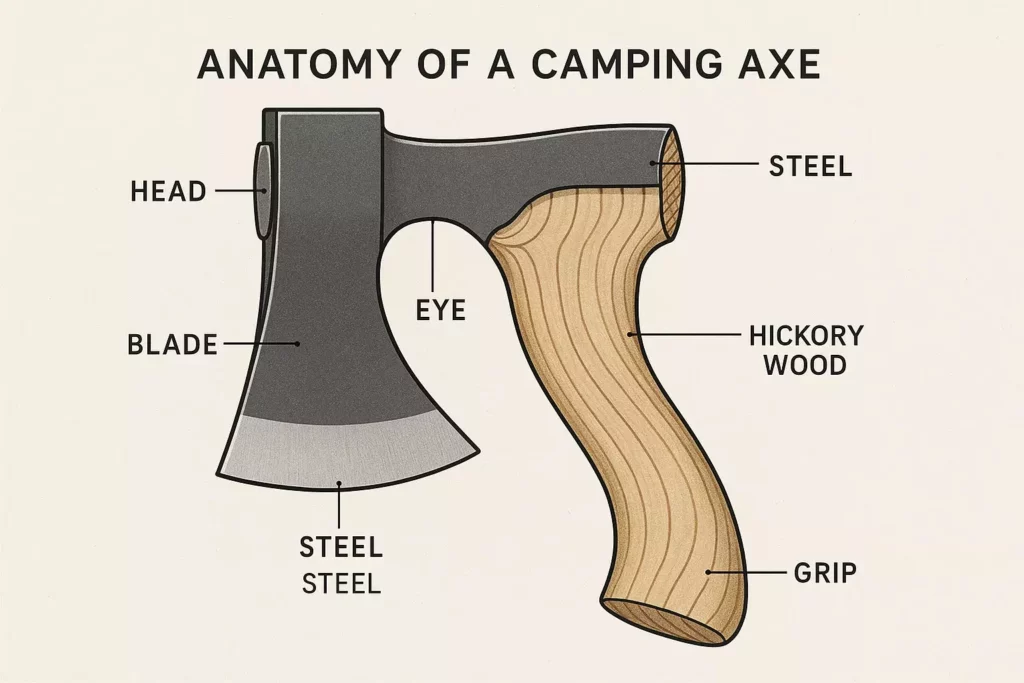
Sharpening Your Camping Axe 🔪
A sharp axe is a safe axe. Dull blades require more force, increasing the risk of accidents and reducing efficiency.
Field Sharpening: Carry a small sharpening stone for touch-ups during extended trips. A few quick strokes can restore a working edge.
Home Maintenance: Use a file or grindstone for major sharpening sessions. Maintain the original bevel angle for optimal performance.
Professional Service: Consider professional sharpening for severely damaged or neglected blades.
Rust Prevention
After Each Use: Clean the blade thoroughly and dry completely before storage.
Oil Application: Apply a thin coat of oil to all metal surfaces, especially before long-term storage.
Storage Environment: Keep axes in a dry location with good air circulation.
Handle Maintenance
Wood Handles: Sand lightly and apply linseed oil annually to prevent cracking and maintain grip.
Composite Handles: Clean with mild soap and water; inspect for stress cracks regularly.
Replacement Signs: Replace handles that show cracks, excessive wear, or loose head attachment.
Choosing Based on Camping Style
Backpacking and Ultralight Camping
For backpackers where every ounce matters, a lightweight hatchet or folding camp saw might be more appropriate than a traditional axe. Consider whether you truly need wood-processing capability or if you’ll rely on camp stoves and pre-cut firewood.
Recommended Features:
- Weight under 2 pounds
- Compact design
- Multi-functional tools
- Titanium or lightweight steel
When planning your backpack packing strategy, consider whether an axe fits your gear priorities.
Car Camping and Base Camps
Car campers have the luxury of carrying heavier, more capable tools. A full-size camp axe provides the versatility to handle everything from kindling to substantial firewood processing.
Recommended Features:
- 2-3 pound weight range
- 20-24 inch handle length
- Comfortable grip
- Included sheath
Extended Wilderness Trips
Long-term camping requires reliable, durable tools that can handle heavy use without failure. Invest in professional-grade axes with proven track records.
Recommended Features:
- Premium steel construction
- Replaceable handles
- Lifetime warranties
- Field-serviceable design
Consider pairing your axe selection with other essential gear like a comprehensive bushcraft survival kit and first aid supplies.
🪓 Find Your Perfect Camping Axe
Answer a few questions to get personalized recommendations
What type of camping do you primarily do?
Seasonal Considerations
Summer Camping Axes
Summer camping typically involves drier wood that splits more easily. A lighter axe often suffices for summer firewood processing, making this an ideal time for beginners to develop their skills.
Summer Priorities:
- Lightweight design for comfort
- Rust-resistant materials for humid conditions
- Comfortable grips for extended use
Winter and Cold Weather Performance
Cold weather camping demands more firewood for warmth and longer burn times. Additionally, frozen wood can be significantly harder to split, requiring more powerful tools.
Winter Considerations:
- Heavier axes for frozen wood
- Non-slip grips for gloved hands
- Durable construction for demanding conditions
When planning for cold weather camping, coordinate your axe selection with appropriate cold weather clothing and sleeping bag choices.
Wet Weather Challenges
Wet conditions present unique challenges for axe use and maintenance. Wet wood becomes harder to split cleanly, and moisture increases rust risk for carbon steel blades.
Wet Weather Tips:
- Choose stainless steel or coated blades
- Ensure secure, non-slip grips
- Plan for extended drying and maintenance
Advanced Techniques and Tips
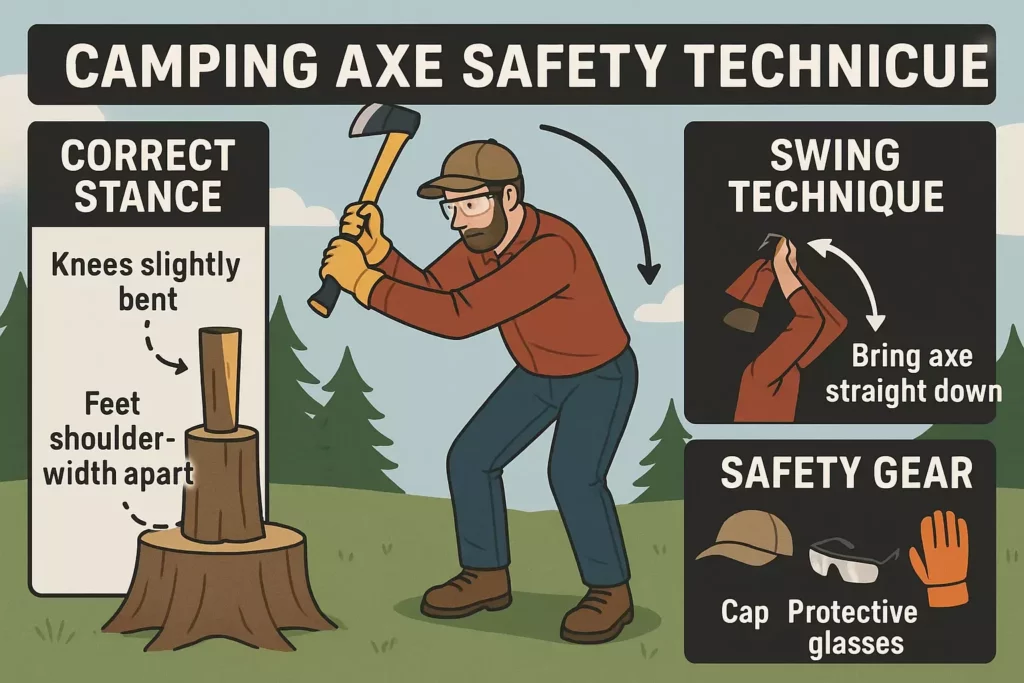
Efficient Splitting Techniques
Reading the Wood: Learn to identify natural grain lines and weak points in logs. Splitting along the grain requires significantly less effort than cutting across it.
Progressive Splitting: Start with smaller pieces and work up to larger logs as you warm up and find your rhythm.
Wedge Technique: For large, stubborn logs, use your axe to start a split, then drive wedges to complete the separation.
Field Sharpening Methods
Stone Technique: Use a circular motion with consistent pressure. Maintain the original bevel angle for optimal performance.
File Method: Draw files across the blade in smooth, even strokes. Files work faster than stones but require more skill to maintain proper angles.
Emergency Sharpening: In a pinch, a flat river rock can restore a basic working edge to your axe.
Troubleshooting Common Issues
Loose Head: Never use an axe with a loose head. Soak wooden handles in water to swell the wood, or replace the handle entirely.
Chipped Blade: Small chips can be filed out, but large damage requires professional repair or replacement.
Handle Damage: Cracks or splinters in handles create serious safety hazards. Replace damaged handles immediately.
Environmental and Legal Considerations
Leave No Trace Principles
Responsible axe use aligns with Leave No Trace ethics. Only cut dead, fallen wood unless specifically permitted otherwise. Avoid cutting live trees or damaging the local ecosystem.
Sustainable Practices:
- Use only dead and down wood
- Cut wood away from campsites
- Burn wood completely to ash
- Scatter cold ashes widely
Local Regulations and Fire Restrictions
Many camping areas have specific regulations about tool use and firewood collection. Research local rules before your trip to ensure compliance.
Common Restrictions:
- Firewood import/export bans
- Tool size limitations
- Seasonal fire restrictions
- Protected area regulations
Firewood Ethics
Collecting firewood responsibly protects ecosystems and ensures resources remain available for future campers. Take only what you need and leave smaller pieces for wildlife habitat.
When setting up your first camping experience, understanding these environmental considerations helps create positive outdoor experiences for everyone.
Budget-Friendly Alternatives
Multi-Tool Options
For casual campers or those on tight budgets, multi-tools with axe functionality can provide adequate performance for basic tasks while serving multiple purposes.
Benefits:
- Lower cost than dedicated axes
- Space-saving design
- Multiple tool functions
- Good for occasional use
Limitations:
- Reduced chopping efficiency
- Smaller blade size
- Less durable construction
- Limited to light-duty tasks
Folding Camp Saws
In some situations, a folding camp saw might better serve your needs than an axe, especially for processing smaller diameter wood or when weight is critical.
When to Choose Saws:
- Ultralight backpacking
- Precision cutting needs
- Noise-sensitive environments
- Limited upper body strength
Rental and Borrowing Options
For occasional campers, renting or borrowing axes can provide access to quality tools without the full purchase cost. Many outdoor retailers and camping outfitters offer rental programs.
Making Your Final Decision
Creating Your Requirements List
Before shopping, create a prioritized list of your specific needs:
- Primary use cases (kindling, firewood, general cutting)
- Weight limitations (backpacking vs. car camping)
- Budget constraints (realistic spending range)
- Experience level (beginner-friendly vs. professional features)
- Storage considerations (available space for transport/storage)
Testing Before Buying
Whenever possible, handle axes in person before purchasing. Pay attention to:
- Grip comfort in your hands
- Weight distribution and balance
- Build quality and finish
- Overall feel during practice swings
Warranty and Support Considerations
Quality manufacturers stand behind their products with comprehensive warranties and customer support. Consider these factors when comparing similar models:
- Warranty length and coverage
- Replacement part availability
- Customer service reputation
- Repair service options
Conclusion
Finding the best camping axe requires balancing your specific needs with the available options in your budget range. Whether you choose a lightweight hatchet for backpacking adventures, a versatile camp axe for weekend trips, or a full-size axe for extended wilderness stays, the right tool will enhance your outdoor experience and provide years of reliable service.
Remember that the best camping axe is the one you’ll actually use safely and effectively. Start with your camping style and intended uses, then narrow down options based on weight, materials, and budget constraints. Don’t forget to factor in essential accessories like protective sheaths, sharpening tools, and proper storage solutions.
Your Next Steps:
- Assess your camping style and primary use cases
- Set a realistic budget that includes accessories
- Research specific models that match your requirements
- Read reviews from actual users in similar situations
- Test axes in person when possible before purchasing
- Invest in proper maintenance tools and safety equipment
With the right camping axe in your gear collection, you’ll be prepared to tackle firewood processing tasks efficiently and safely, making your outdoor adventures more enjoyable and self-reliant. Whether you’re gathering kindling for your morning coffee or splitting logs for a cozy evening campfire, your perfect camping axe will be ready to serve you well in the great outdoors.

